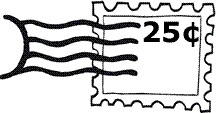

Students will use the FRED database to download the Consumer Price Index (CPI) and calculate the equivalent price of a product from an earlier time to the relative price today. Students will discuss the limits of using a weighted index and changes in the quality of products when calculating the relative prices of goods from two time periods.
Introduction
In this lesson, students will (1) download the CPI from the FRED database hosted by the St. Louis Federal Reserve Bank; (2) calculate the prices of household staples from earlier time periods into current prices; (3) conclude the lesson by discussing some of the limitations of these conversions with special attention given to changes in technologies, the weights placed on the goods AND services in the representative basket of the urban consumer (not rural), etc.
Learning Objectives
- Convert prices from one year to another.
- Explain the limitations of comparing prices from two time periods.
Resource List
-
1981 Economy/Prices: This website provides information about the economy and prices of various items in 1981. For prices in the 1980s, navigate to Flashback Economy.
www.1980sflashback.com:80/1981/economy.asp
-
St. Louis Federal Reserve Bank FRED database: Consumer Price Index graph for all urban consumers.
https://fred.stlouisfed.org/graph/?id=CPIAUCSL
- "How Much Does It Cost Now?": A worksheet activity for this lesson.
-
"How Much Does It Cost Now?" KEY: The key to the worksheet activity for this lesson.
-
Focus on Economic Data: Consumer Price Index and Inflation: An excellent EconEdLink lesson that correlates to Consumer Price Index (CPI).
https://www.econedlink.org/resources/inflation-data-is-the-economy-healthy/
-
When Gas was a Quarter!: Here is another excellent EconEdLink lesson that relates to Consumer Price Index (CPI).
https://econedlink.org/resources/when-gas-was-a-quarter/
-
Was Babe Ruth Under Paid?: One more excellent EconEdLink lesson that correlates to Consumer Price Index (CPI).
https://econedlink.org/resources/was-babe-ruth-under-paid/
-
Measuring Worth: An article explaining the relative value of U.S. dollars from 1774 to the present. It also contains a calculator that teachers may find useful for this or other lessons.
https://www.measuringworth.com/calculators/uscompare/
Process
1. Show how to inflate prices between two time periods.
2. Distribute the worksheet, "How Much Does It Cost Now?"
3. Ask students to use a computer to download CPIAUCNS data series from the FRED database.
4. Ask students to complete the worksheet and discuss limitations.
Conclusion
Students should be able to take the price of an item in a prior year and multiply it by (CPInow/CPIthen) to derive the relative price in today’s terms. Students will find that inflating prices from an earlier period don’t always match prices today. There are several reasons: (1) Technological improvements, especially in the electronics and computer industry, may have lead to quality improvements and lower prices; (2) Goods being measured by the index might be produced in a competitive market where prices in the long-run approach the marginal cost of production; and (3) The CPI is a weighted average of all goods. Some goods are weighted differently than others and might not reflect the average price level.
This lesson plan is a hands-on and interactive approach to working with data and making meaningful interrelationships among economic concepts. Students will have a better understanding of the relative prices between prior years and the present to make comparisons in using economic models.
Extension Activity
1. Changes in the CPI coincide with changes in the inflation rate. During times of an increasing CPI or inflation, real buying power decreases. For example, suppose Juan earns $10 per hour and the CPI is 1. Then Juan’s wages really buy $10 worth of goods. If Juan’s wage rate stays at $10 but the CPI doubles, then Juan’s real buying power is only $5 worth of goods. It may come as a surprise that during a deflationary time, Juan’s earning power actually increases!
Read this article, https://www.measuringworth.com/calculators/uscompare/ , for more information on purchasing power.
2. Ask the students to prepare a new price index by converting the CPI to 2009 prices. Use 2009 as the base year. A sample spreadsheet is below: From left to right: date, CPI in 2005 dollars, CPI in 2009 dollars.
2007-10-01 208.936 1.01
2007-11-01 210.177 1.00
2007-12-01 210.036 1.00
2008-01-01 211.080 1.00
2008-02-01 211.693 1.01
2008-03-01 213.528 1.01
2008-04-01 214.823 1.01
2008-05-01 216.632 1.01
2008-06-01 218.815 1.01
2008-07-01 219.964 1.00
2008-08-01 219.086 1.00
2008-09-01 218.783 0.99
2008-10-01 216.573 0.98
2008-11-01 212.425 0.99
2008-12-01 210.228 1.00
2009-01-01 211.143 1.00
2009-02-01 212.193 1.00
2009-03-01 212.709 1.00
2009-04-01 213.240 1.00
2009-05-01 213.856 1.01
2009-06-01 215.693 1.00
2009-07-01 215.351 1.00
3. Your father says, "When I was your age, I worked for peanuts. Now, I see young people starting out making a lot more than I did. I wish I could be starting out now." How would you determine if your father would have been better off or worse at the current price levels?
[Student’s answer should discuss that some sectors might have benefited from rising prices and some sectors might have been hurt by productivity. For example, farmers have witnessed significant gains in productivity and lower prices for their cash crops. These lower prices may have driven some out of the industry. Answers may vary, but professional occupations, especially those in the medical fields, have seen an increase in real wages as prices in those industries have outpaced inflation.]
Assessment
1. When John F. Kennedy became president in November, 1961, his salary was $100,000. After adjusting for inflation, what would we expect his salary be in 2009 dollars?
[$100,000 * (212.425/30.400) = $698,766.45]
2. The price of a dozen eggs in January, 1981 was $.90. After adjusting for inflation, what can we expect a dozen eggs to cost in 2009 prices?
[$.90 * (211.143/87.000)= $2.18]
3. In April, 1989 the price of a first-class stamp was $.25. After adjusting for inflation, what would the stamp cost in 2009 prices?
[$.25 * (213.24/123.100) = $.43]
